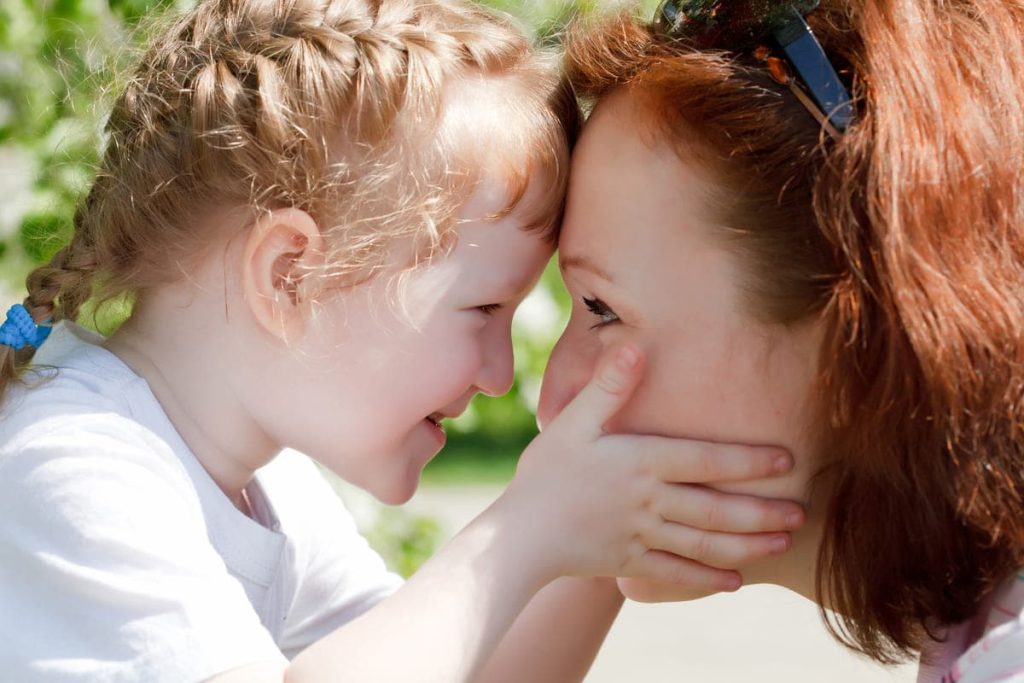Navigating parent-child conflicts is complex to deal with, but they’re part of being a parent and an aspect of family dynamics. As much as we hate it, conflicts are a natural part of any relationship, and the bond between parents and children is no exception.
Handling disputes, from minor disagreements to intense arguments, will greatly affect emotional health and relationship strength.
This article will help you understand the conflicts with your kids, and using effective communication and problem-solving strategies can transform challenges into growth opportunities for both of you.
Key Takeaways:
- Conflict resolution skills are crucial to resolve conflicts and build healthy parent-child relationships.
- Managing disputes and dealing with conflict effectively supports emotional growth and development.
- Positive interactions during conflicts can strengthen family bonds and promote a healthier relationship.
Understanding the Root Causes of Conflicts
Parent-child conflicts require patience and understanding of the roots of these conflicts, which often stem from fundamental issues such as:
- Communication
- Emotions, developmental stages
- Differing approaches to peaceful parenting
Communication Breakdown
Conflicts in the family, particularly between parents and children, can frequently be traced back to communication breakdowns.
Conflicts arise from misunderstandings when messages are not clearly conveyed or received. Therefore, parents might issue care instructions without providing context, or children may not feel heard by their guardians.
Effective communication is key, as it allows both parties to voice their thoughts and feelings, reducing the chances of misunderstandings and stress.
Emotional Dynamics
The emotional landscape of the parent-child relationship is rich and prone to conflict. Parents often struggle to balance their own stress and emotions while helping their child learn to manage theirs. Recognizing and validating each other’s feelings can mitigate these tensions.
Developmental Challenges
As children learn and grow, they seek independence and autonomy, a natural part of adolescence and growth. This period of developmental challenges can heighten tensions, especially as children test boundaries and assert their own power.
Getting through these conflicts requires patience, and learning to navigate this critical period involves understanding the necessary shifts in parenting strategies to support a child’s desire for more freedom.
Parenting Styles and Authority
Different parenting styles and perceptions of authority also play a role in parent-child conflicts. It’s best to let children express themselves in healthy ways and address conflicts as they arise.
- Finding a balance between authority and autonomy is crucial for reducing conflict and fostering healthy relationships.
- Consulting a child psychologist can provide insights that go beyond typical parenting advice.
- Make sure your child understands the expectations, ensuring parents need to be equipped enough to understand.
- Ensure to use of this information in resolving any conflict that goes beyond the surface.
Strengthening Family Bonds
This approach requires commitment, a supportive attitude, and consistent communication.
Helping your child learn through these conflicts and applying effective strategies is key.
Fostering Emotional Connection
Caregivers play a pivotal role in enriching family life by fostering a deep sense of attachment and love. Emotional connections thrive when there’s a bedrock of empathy; parents can demonstrate this by:
- Active Listening: They take the time to listen to their children’s thoughts and feelings without interruption, validating their experiences. This helps children feel understood and respected, addressing the unique challenges each conflict with your child presents.
- Quality Time: Prioritize spending one-on-one time with each child to strengthen individual relationships, which can be instrumental in settling a conflict.
Providing support isn’t just about being there during challenges but also about celebrating successes and joys together, reinforcing the bond.
KinVibes Pro-Tip: It’s important to identify when their parents are actively engaged, and parents are not listening only passively. Engaging in conversations and considering their perspectives without interrupting can prevent situations that exacerbate the conflict.
Setting Healthy Boundaries
Creating a balanced family dynamic involves setting clear expectations and limits. Parents should define and communicate boundaries with respect, ensuring they’re age-appropriate and fair. This structure is upheld by:
- Consistency: They maintain steady consequences that are known in advance, fostering an understanding of respect. Decisions should be decided by both parents, ensuring a unified approach.
- Flexibility: Caregivers recognize when adjustments are needed and are open to discussion, reflecting a commitment to the wellbeing of the family unit.
These boundaries are vital in teaching children about respect for others and personal accountability, essential components of a loving and harmonious relationship with their children. By being mindful of your child’s feelings and applying effective strategies, parents can ensure a loving, harmonious relationship with their children and solve the conflict effectively.
Managing and Resolving Disputes

Effective management and resolution of parent-child disputes involve practical techniques and steps for repairing relationships. These strategies aim to foster understanding, improve communication, and ensure a loving and harmonious atmosphere.
Parents should set clear boundaries while also listening to their children’s perspectives, ensuring that misunderstandings and disagreements are handled constructively.
When parents are preoccupied with their work and other responsibilities, it gives rise to feelings of neglect in children, which can worsen conflicts.
Conflict Resolution Techniques
In tackling conflicts, parents must listen attentively to their children, as children are very perceptive. By applying effective strategies, parents and children can deploy several resolution techniques that promote problem-solving and empower both parties to express their feelings constructively.
Here’s a brief breakdown of methods they might use:
- Active Listening: Encourage everyone to time to listen attentively without interruption, demonstrating that all viewpoints are valued.
- I-Statements: Use phrases like “I feel” rather than “You make me feel” to own emotions without assigning blame.
- Calm Environment: Discuss issues in a neutral setting to prevent escalation.
- Time-Outs: Take a break if emotions run high, allowing for cooling down before resuming the conversation.
- Compromise: Find a middle ground where everyone makes concessions.
- Apology and Forgiveness: Teach the importance of sincere apologies and the strength it takes to forgive.
- Listening: Reflective listening by paraphrasing what your child says can be highly effective. Sometimes it’s best to let minor issues slide to maintain peace.
Repairing Relationship Rifts
The repair process is crucial for reconnection and healing after a dispute. It focuses on behaviors that rebuild trust and closeness between parent and child. Here’s how:
- Recognition and Apology: Acknowledging wrongdoings and offering a genuine apology sets the stage for making amends.
- Coping Strategies: Both sides should learn effective coping mechanisms to deal with stress and frustrations that might lead to future conflicts.
- Consistent Amends: Making amends isn’t a one-time act but an ongoing commitment to change hurtful behaviors.
- Rebuilding Trust: Trust is rebuilt through consistent and changed behavior over time, showing commitment to the relationship.
- Reconnection Activities: Engage in shared activities that both enjoy to rebuild the companionship and bond.
- Counseling: If conflicts persist, seeking professional help can provide new perspectives and strategies for resolution.
Promoting Positive Interactions

Creating strong and positive interactions within families is about empathy, shared experiences, and genuine enjoyment in each other’s company. By focusing on understanding and joy, parents and children can build a foundation of trust and affection that supports their relationship.
When listening to your child’s concerns, it is important to be empathetic and patient.
Encouraging Empathy and Understanding
Empathy is essential in the family dynamic. It’s about getting into someone else’s shoes; parents and children need to acknowledge and validate each other’s feelings. When parents listen attentively and show attunement to their children’s emotional state, they’re laying the groundwork for positive interactions.
However, applying effective strategies can help when a child may refuse to listen. It’s crucial not to let your ego get in the way of understanding their perspective.
Regular heartfelt conversations, where family members are encouraged to express themselves without fear of judgment, foster a sense of valuing each other. A simple list to foster empathy may include:
- Active Listening: Full attention to the speaker, nodding, and affirmative responses.
- Validation: Acknowledging feelings with phrases like, “instead of saying ‘You’re wrong,’ try framing the concern in a non-confrontational way.”
- Presence: Putting aside distractions to be fully with each other, especially younger ones who feel more empowered when they can make their own decisions.
Sharing Joy and Recreation
Playfulness and shared leisure activities are cornerstones for happiness and bonding within families. People are encouraged to engage in activities such as:
- Weekend hike
- Game night
- Watching a TV show together
Here are more examples of activities that families can enjoy together:
| Activity | Involvement | Benefits |
|---|---|---|
| Cooking a Meal Together | Collaborating in the kitchen to prepare a favorite family recipe or trying out a new dish. | Encourages teamwork and culinary skills; fosters family bonding. |
| Family Bike Rides | Exploring local trails or parks on bicycles, suitable for all ages. | Promotes physical activity and exploration of nature. |
| Arts and Crafts Session | Engaging in creative projects like painting, sculpting, or making DIY crafts. | Stimulates creativity and provides a platform for artistic expression. |
| Gardening Together | Working on a home garden, planting flowers, vegetables, or herbs. | Teaches responsibility and care for nature; enjoyable and relaxing. |
| Picnicking in the Park | Packing a meal and enjoying it outdoors in a local park. | Allows for enjoying nature and leisure time in a relaxing environment. |
These shared experiences become cherished memories and lighten the mood, often diffusing anger or inconsistency. The key ingredients for joyous occasions are:
- Common Interests: Discover what everyone loves doing and plan to do it together. Instead of insisting on a particular activity, give choices and allow everyone to have a say.
- Spontaneity: Sometimes, the best moments come from impromptu fun. It’s also an opportunity to teach their children valuable decision-making skills in the long run.
- Inclusion: Ensure every family member, including friends who may be like family, feels included and wanted. Know their limits and avoid constantly reminding children of what they can’t do.
KinVibes Pro-Tip: If conflicts persist, referring you to a child psychologist or family counselor might be beneficial. Remember, it’s natural for disagreements to occur, but how they are handled can significantly impact family dynamics.
Supporting Emotional Health and Growth

Understanding their Perspective
When considering choices and allow your child to express themselves, it becomes easier to understand developmental stages of their perspective. Recognizing that as a parent, you may have to change your approach is crucial. Sometimes, a child’s behavior may be a reaction to the environment or situation.
Therefore, the best approach may be to change your strategy to address the underlying issue, anticipating that the child will change their reaction accordingly.
This method works best when your child feels heard and validated. Recognizing when a child is old enough to understand certain concepts is vital.
It’s normal for children to feel angry at times, and it’s important to let your child be responsible for their emotions while guiding them gently. As a care provider, understanding these developmental stages helps in effectively managing conflicts.
Building Resilience and Autonomy
Resilience and autonomy are crucial in a child’s life, equipping them to handle adversity and develop a healthy self-esteem. They learn through experiences that not all conflicts are negative; rather, they can be opportunities for personal growth and learning. Parents can support resilience by:
- Encouraging problem-solving: Allowing a child to face challenges and think through solutions promotes autonomy.
- Offering emotional support: A consistent, loving presence helps a child to feel secure, bolstering their ability to recover from setbacks.
Addressing Mental Health and Well-being
Children’s emotional regulation and mental health are pivotal in how they process and recover from conflicts. Poor handling of parent-child conflicts can lead to anxiety and depression, impacting a child’s well-being. Strategies to support a child’s mental health include:
- Open communication: Actively listening and speaking to children about their feelings teaches them to articulate their emotions.
- Professional support: If needed, seek therapy for the child, which can be especially beneficial in cases of persistent conflict that contributes to mental health issues.
Frequently Asked Questions

What are some common examples of conflicts between parents and their children?
Conflicts between parents and their children often stem from misunderstandings or differing expectations. A child might feel frustrated with constant reminders about chores, while parents might feel their child isn’t taking on enough responsibility at home.
What are the different types of conflicts that can occur in parent-child relationships?
Parent-child conflicts can be classified as developmental, as children push for independence, or situational, arising from specific events like a disagreement over screen time. Persistent behavioral issues may also lead to ongoing conflicts.
How can parents and children effectively resolve their conflicts?
Effective resolution comes from active listening, understanding each other’s perspective, and finding a middle ground. It’s beneficial for both parties to practice clear communication and use problem-solving techniques together.
What strategies can be used to prevent conflicts with children and deal with them constructively when they arise?
Prevention strategies include setting clear expectations and boundaries, being consistent with rules, and actively engaging in quality time together. When conflicts arise, they should approach the situation calmly and with a focus on finding solutions rather than assigning blame.
What are the potential effects of unresolved conflicts between parents and children?
Unresolved conflicts can damage the relationship, leading to further misunderstanding, resentment, and a breakdown in communication. Over time, chronic conflict can affect a child’s emotional well-being and their social development.
How should one deal with an emotionally unstable parent without escalating the conflict?
When dealing with an emotionally unstable parent, it’s important to remain calm and not take things personally. They can try to communicate at a time when the parent is most receptive and seek to establish boundaries that protect their own emotional health.
final thoughts – TURN YOUR PARENT-CHILD CONFLICTS INTO OPPORTUNITIES FOR GROWTH
As we’ve learned, effectively navigating parent-child conflicts involves understanding their roots, such as communication issues and emotional dynamics, and employing resolution techniques like active listening and compromise. Strengthening family bonds through empathy, shared experiences, and setting appropriate boundaries is crucial.
Additionally, fostering each child’s emotional health and resilience is key. By embracing these strategies with patience and commitment, parents and children can turn conflicts into opportunities for growth, leading to stronger and more meaningful family relationships.






